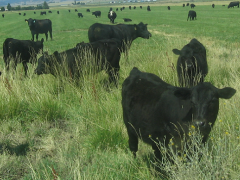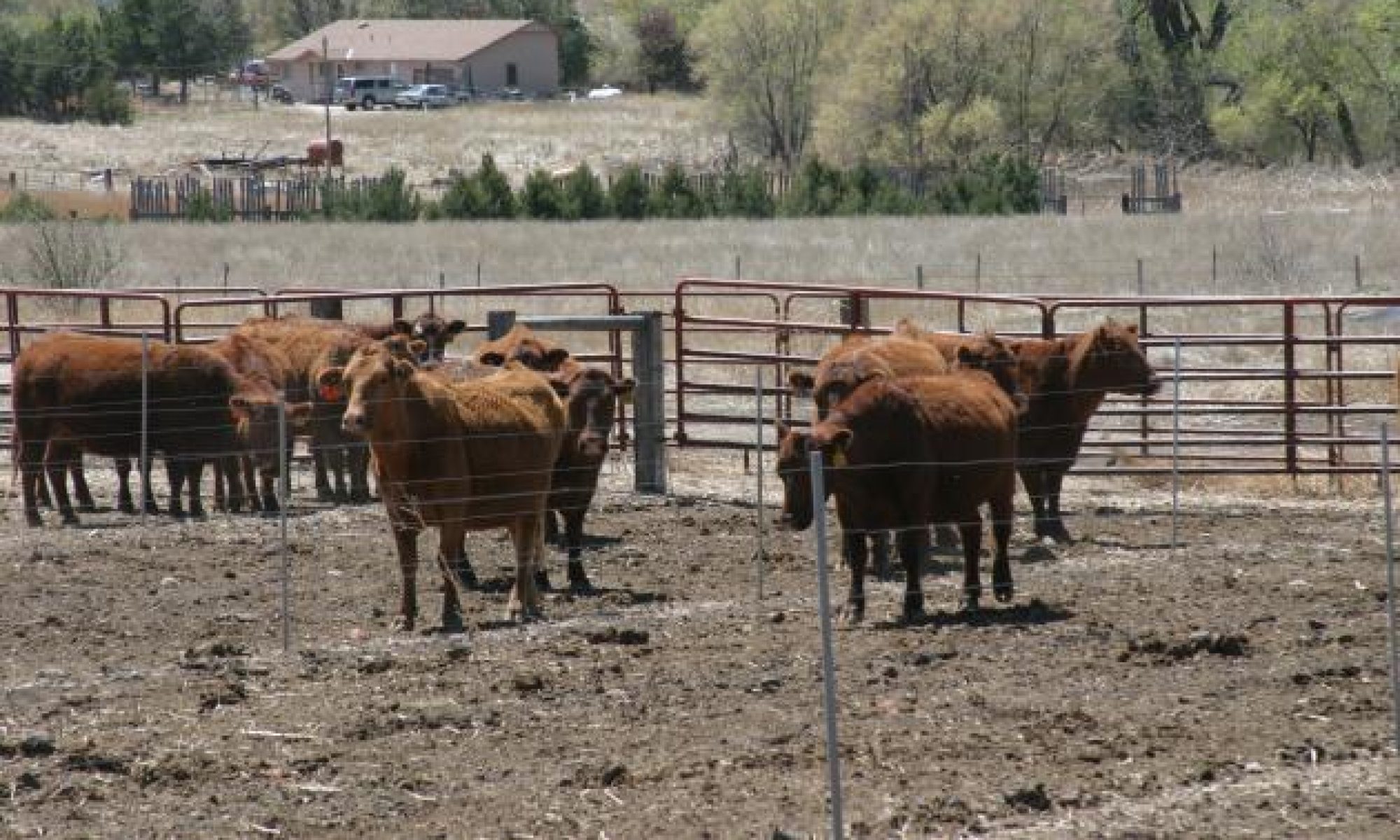 Genetic Practices to Improve
Genetic Practices to Improve
Beef Cattle Reproduction
Darrh Bullock
University of Kentucky
dbullock@uky.edu
*Click here for printable pdf version.
Summary: Reproduction is typically a lowly heritable trait, but there are genetic practices that can help improve reproduction rates.
Introduction
Reproduction has a great impact on the profitability of beef cattle producers and is therefore an important consideration when making genetic management decisions. Due to the low heritability of most reproductive traits many producers feel there is little that can be done through genetic management and rely solely on other management practices such as health programs and nutrition management. While nutrition and health are critical to good reproductive rates, this publication will focus on genetic practices that can have a positive impact on reproduction.
Crossbreeding
The single best genetic management tool available for improved reproduction in commercial beef operations is crossbreeding. By implementing a crossbreeding program combining 2 or more breeds, commercial producers can take advantage of both heterosis (hybrid vigor) and breed complementarity. (For more on information on crossbreeding please see fact sheet 2014-5.)
Heterosis
Heterosis is the benefit gained when two or more breeds are crossed. The benefit is realized based on how genes for a trait combine, with there being a benefit for the two genes coming from different ancestral (breed) origins. Heterosis has the greatest impact on lowly heritable traits, such as reproduction. There are three basic types of heterosis: individual (affecting the calf), maternal (affecting the dam) and paternal (affecting the sire). Each of these types of heterosis can have an impact on herd fertility. The influence of individual heterosis on reproductive traits is improved live births and survival to weaning. Maternal heterosis positively impacts reproductive traits such as conception rate, live births and survival to weaning, along with other important economic traits. Little is known about the impact of paternal heterosis on reproduction but likely has a positive impact on serving capacity. See Table 1 for specific levels of heterosis and its potential impact.
|
Table 1. The units of improvement and percent heterosis for Calving Rate and Survival to Weaning. |
 |
Selection
Selection for improved reproduction has often been ignored because of the low heritability of most reproductive traits. The greatest impact a producer can have on reproductive traits is through management practices such as proper nutrition, a good health program and a crossbreeding system. However, there are still opportunities to improve reproductive efficiency through selection and due to the economic impact of reproduction these opportunities should not be ignored.
EPDs
Regardless of the heritability of a trait, the most effective means to make genetic improvements through selection is by using Expected Progeny Differences (EPDs). Current EPDs that allow producers to select for improved reproduction are Stayability, Heifer Pregnancy Rate and 30-month Pregnancy Rate. Individual breed associations determine which, if any, reproduction EPDs they compute.
Stayability – predicts the probability of a bull’s daughters delivering a calf every year until six years of age. Higher EPD indicate a higher percentage of daughters remaining productive in the herd until 6 years of age.
Heifer Pregnancy – predicts the probability of a bull’s daughters becoming pregnant as first-calf heifers during a normal breeding season. Higher EPD indicate a higher percentage of pregnancies.
30-month Pregnancy – predicts the probability that a bull’s daughters will become pregnant and calve at three years of age, assuming they calved as a two-year old. Higher EPD indicates a higher percentage of a sire’s daughters will calve at three years, of the ones that calved as two-year olds.
Scrotal Circumference – measure of genetic merit for scrotal circumference. Higher EPD indicates bull calves will have larger scrotal circumferences. Scrotal circumference has been linked with increased serving capacity of the bull. Seedstock producers should use Scrotal Circumference EPDs to assist in breeding bulls with larger scrotal circumferences; however, commercial producers should be purchasing bulls with larger actual scrotal circumferences to take advantage of their increased serving capacity.
Whole Herd Reporting (WHR)
Whole Herd Reporting, Total Herd Reporting, Total Herd Enrollment are all examples of inventory based methods of reporting data on all animals in the herd. The decision to mandate WHR is the sole responsibility of the breed association and there are different guidelines for each association. For specific information on a breed please refer to their website. In general, this is a concept aimed at getting a higher percentage of data reported for inclusion in the breed’s genetic evaluation. Typically with WHR, fees are spread over the entire herd instead of just those that are registered, which encourages data to be reported on all animals and reduces selective reporting. WHR improves the reliability of EPDs in general, but is especially important for computing reproduction EPDs. With conventional reporting methods if data is missing it is impossible to know if that is because a calf was not born or the producer simply chose not to report the data. With WHR missing data indicates a calf was not born. For traits such as Stayability, Heifer Pregnancy and 30-month Pregnancy, where knowledge of a successful or unsuccessful pregnancy is critical, WHR has a clear advantage. Knowledge of which females were exposed for breeding and which ones resulted in a successful pregnancy are critical to compute a reliable EPD.
Genomics
Another innovation that is helping to improve the accuracy of reproduction EPDs is the use of genomics information in genetic evaluations (see fact sheet 2014-12). Genomics, in combination with good records, provides the opportunity to get relatively accurate EPDs on a bull at a young age. With records alone the process is much slower because of the long generation interval in beef production. For a trait such as stayability there are no records on a bull until he is approximately 8 years old (six-year old daughters); therefore, the information that determines a bull’s EPD is typically based on pedigree information instead of his own data. Genomics can provide individual information on the bull at an earlier age.
Genetic by Environmental Interactions
Matching genetics to the environment and management is critical to ensure good reproductive performance. In beef operations that have limited or low quality nutrition, and combine that with genetics for high productivity, increase their risk for reproductive failure. Cattle that have genetics for high growth and milking ability have high maintenance requirements, as well as, require high levels of nutrients to meet that level of productivity. This combination, in absence of the required nutrients, results in reduced body condition which adversely affects their ability to cycle and breed.
Summary
Maintaining high reproduction rates is an important factor in beef producers being profitable. Although providing a good environment for cattle is essential to reproductive success, there are also genetic practices that can be implemented to improve the likelihood of acceptable reproduction. For commercial producers it is important to implement a good crossbreeding program to provide the best opportunity for high reproduction rates. Selection, through the use of EPDs will provide limited, but valuable improvements to various reproduction traits that can be utilized in both seedstock and commercial beef operations. EPDs can also be used to help match genetic potential of the herd to the nutrition level of the environment. Combining good management with sound genetic practices gives producers the best opportunity for high reproductive performance.
